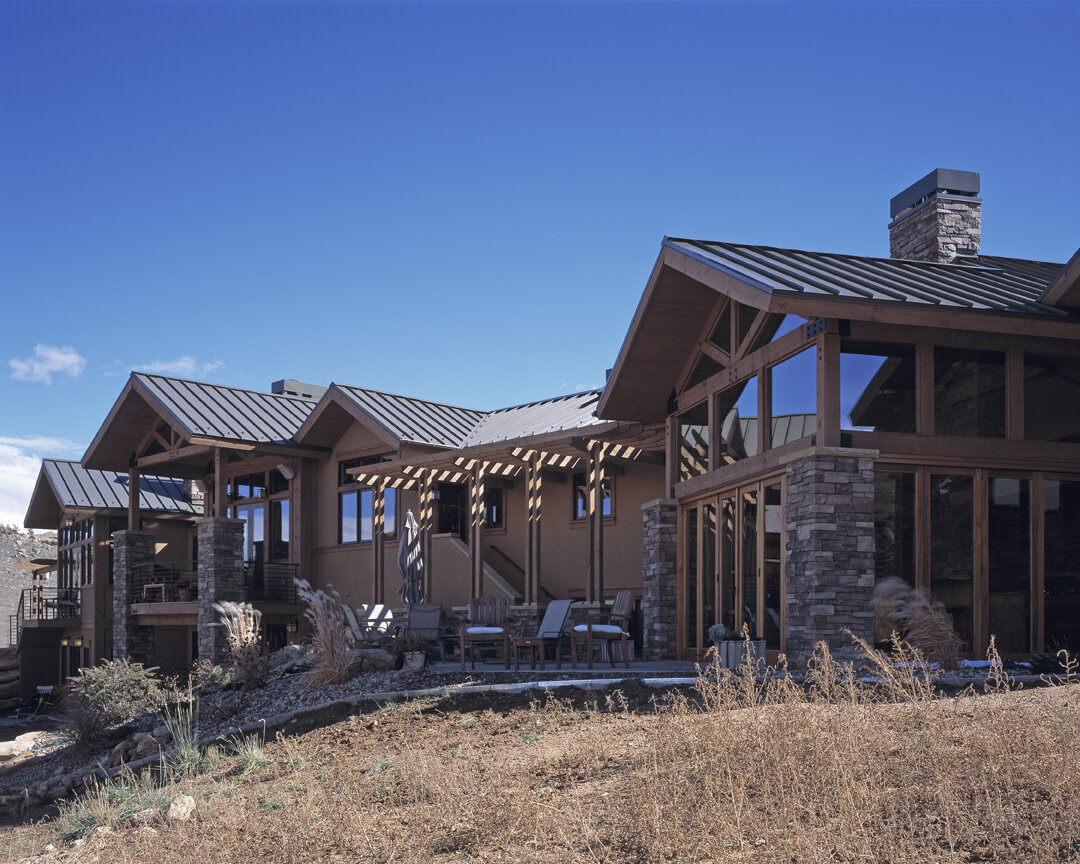Although each of these probably deserves much more discussion than given, here are some thoughts on six of the most important aspects of sustainability and my approach to their meaning and application, our Sustainability Manifesto, if you will: SIZE
The single best thing that anyone can do to reduce a building's carbon footprint is to be extremely rigorous about making the building absolutely no larger than it "needs" to be. Clearly this is about examining what the needs really are and testing the program of the potential building in a number of different ways. For residential work it may be as simple as starting with a client's likely or existing furniture and crafting spaces that are responsive to those arrangements. For commercial or public work it often takes the form of reviewing all the desired spaces and trying different configurations of combined and joint-use spaces. Size does matter.
REGIONALISM
The local sources of materials is critical when we are trying to design responsible, sustainable buildings. But maybe more so is a clear recognition of local topography and climate. To this end, a fairly careful study of local vernacular buildings can give us a series of clues of how sun, wind, rain and temperature combine to make a distinct micro-environment. While we probably wouldn't advocate simply copying any given regional style of architecture, learning from them is essential. A green roof that needs irrigation here in the Rocky Mountain West would strain our greatest scarcity, water, for an energy savings better gained through solar energy.
MATERIALS
From sustainably harvested hardwoods to fair-trade manufactured goods, the selection of materials, finish materials but also structural, mechanical, plumbing, electrical and other not-easily-seen materials is also critical to creating buildings that live lightly on the earth. Ten years ago this was a complicated task with most products of uncertain sourcing and unknown imbedded energy. The selection of sustainable materials has become significantly easier recently with a slew of non-profits providing clear and accurate information for most construction materials and their possible alternatives.
CONSTRUCTION (DURABILITY)
Running a life-cycle analysis for the selection of materials and systems is essential in large commercial and public/institutional projects. Building well however is a moral stance that goes well beyond this kind of technical review and really points to the architect's and builder's role as stewards of the built environment. As architects I think we are often pushing the envelope on the use of materials or their applications in unusual situations, but it is our responsibility to check our egos at the door and recognize that the risks we may be taking with a given material or system will fall at the feet of our clients. If they are able or willing to bear that risk, to keep a rain screen properly maintained or a roofing system routinely inspected, then materials failures will occur and buildings will be torn down well before their time. Even with aggressive de-constuction methods and recycling, the demolition of a building is a shocking waste of energy, time, money and frankly culture and history.
DESIGN
I think most architects imagine their buildings lasting well into the future and having a long and useful life. We would all like to think that something about what we are doing is a bit timeless. We can avoid short-lived architectural and design trends and fads, but the forces that come to bear on a property are often well outside the predictive talents of architects and owners. Frank Lloyd Wright's Imperial Hotel fell to the demolition ax as have thousands of other great buildings that ended up in the wrong place at the wrong time. Making design decisions to avoid the most obvious architectural gimmickry is essential, but if you're not sure if you are doing that or not then your ability to judge that is probably moot. We can design buildings that have great spaces filled with light and well-built, chosen and assembled materials that hopefully can be flexible enough to transcend their original program intents.
TECHNOLOGY
I place this last because I think frankly it is the least important. For every amazing new green product or energy-saving or creating system, there is yesterday's solution heaped in a landfill. Very often a technological solution is the last resort to either fixing an inherent design flaw or merely an added benefit to an already well designed project. I am always eager to look into new products, systems and applications, but not as a substitute for any of the points mentioned above. If a new solar panel technology can benefit and project and we have done a good job at all the other aspects of creating an environmentally responsible building then by all means let's employ it. But let's not simply add some solar panels to assuage someone's environmental guilt over a poorly designed McMansion.
These six principles are the basis for our approach to all projects, regardless of their level of desired sustainability. These are but a few of the aspects that go into all good architecture. Interest in sustainability and green building techniques has sky-rocketed in the past few years but it has too often focused on technology and product selection. Good architecture, really good architecture, has always been there, balancing nature and culture, needs and desires.






